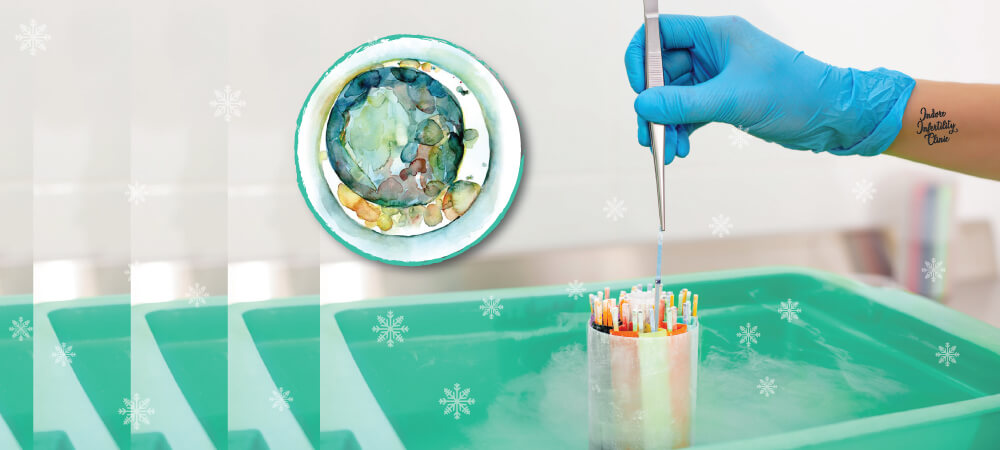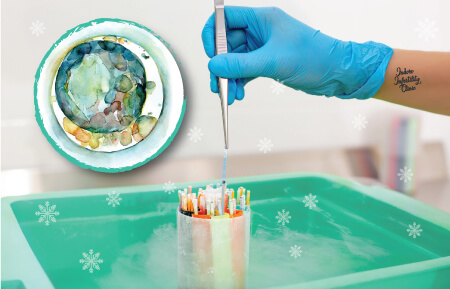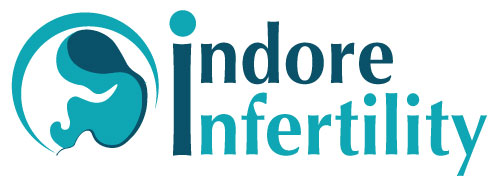

What is Embryo Freezing or Egg Freezing?
Before we get into understanding if embryo freezing or egg freezing is safe, let us understand what is embryo freezing. Most of the IVF Cycles usually result in the formation of more than one good-quality embryo (Blastocyst). It is always advisable to choose a single blastocyst (a Day-5 Embryo) transfer, which means that one good quality embryo will be transferred, while the remaining will be frozen (vitrified) for later use. This process of freezing or cryopreserving extra embryos is called Embryo Vitrification or Embryo Cryopreservation.
During Embryo Freezing, embryos are stored under liquid nitrogen at a temperature of -196 degrees.
Before dipping the embryos to such a low temperature, the embryos are treated with special media, so that they can survive such a temperature.
Have a look at the YouTube video below, to understand how this process is carried out in the IVF Lab.
Is Embryo Freezing or Egg Freezing Safe?
In recent years, due to constant innovation and research in the field of ART, new media and techniques have emerged, which has made the process of Embryo Freezing or Embryo Cryopreservation very safe. Technically it is possible to achieve 100% survival of embryos and oocytes using this technique. Hence this process is used on regular basis by IVF Specialists to achieve close to 70% success rate in IVF embryo transfers.
In the recent past, most of the IVF Clinics around the world have shifted to a Freeze All IVF Protocol, instead of a traditional IVF – i.e. Fresh embryo transfer. It is estimated that close to 70% of IVF Cycles around the world are Freeze All Cycles. All this has been made possible by the fact that Cryopreservation has been proven as a safe and effective technique.
There is a huge debate about many aspects of Cryopreservation and its safety, however, there has not been any concrete evidence to prove otherwise.
What is the difference between Fresh Embryo Transfer and Freeze All Protocol? Which is better?
During an IVF Fresh Embryo transfer, the embryos formed are transferred to the patient in the same cycle typically 3 to 5 days after Ovum Pickup or egg retrieval.
In a Freeze, All Protocol, the embryos that are formed are cryopreserved for later use and none of them are transferred in the IVF cycle during which OPU is done. These embryos are then warmed in the subsequent cycle and transferred to the patient, typically 1.5 to 2 months after the egg retrieval.
The drugs used to stimulate the ovaries to produce multiple eggs, usually make the endometrium less receptive, this is the reason why embryo transfers are deferred to a time in a subsequent cycle. Since the receptivity of endometrium is substantially higher during a natural cycle, it results in a significant rise in implantation rates of the embryos.
However, in many cases, Fresh Embryo Transfers are equally successful.

What is the difference between Embryo Cryopreservation and Oocyte Cryopreservation? Which one should I consider?
Freezing or Vitrification of Embryos gives better results as compared to oocyte vitrification or egg freezing. That is the reason that for couples who are married or with a constant partner, freezing embryos makes more sense. However, in patients who want to preserve their fertility (Unmarried Cancer Patients who have upcoming chemo or radiotherapy) or unmarried females who wish to undergo elective fertility preservation, Oocyte Preservation or egg freezing should be considered.
For how long can embryos and eggs( oocytes ) be frozen?
Once the embryos are cryopreserved, technically, they can be stored for an indefinite amount of time. Once dipped under liquid nitrogen, embryos or oocytes stay in a state of animated suspension and can be brought back to life by a process of warming or thawing.
There have been reports where cryopreserved embryos that were preserved 30 years back, were adopted by parents, and resulted in birth of a healthy and live baby.
Every country has a different regulation limiting the maximum number of years up to which gametes can be stored. ICMR guideline in India limits the number of years for storage of gametes to a maximum of 5 years.
Is the procedure of Embryo Transfer different for Frozen Embryo Transfers?
Whether you undergo a Fresh Embryo Transfer or warmed embryo transfer of previously cryopreserved embryos, the procedure of Embryo transfer remains the same.
What is the typical cost of Embryo Freezing?
The cost of embryo freezing is usually part of your IVF package and not charged separately.
What is the cost of Egg Freezing ?
Egg or oocyte freezing consist steps that are very similar to the entire IVF cycle, the only difference being absence of steps for fertilization and embryo transfer. The cost of egg freezing is driven by the number of eggs retrieved in the ovum pickup. Egg freezing cost typically is similar to IVF cycle cost or a little less. The cost is also inclusive of the number of years one is freezing their eggs for.
What is the cost of Frozen Embryo Transfer (FET Cycle) in Indore?
The cost of the FET cycle typically ranges between fifty thousand to seventy thousand. Many factors influence the cost, like which day the embryo is being warmed or brought to normal temperature, whether those embryos will be cultured till blastocyst or not, and whether remaining embryos are opted for refreezing.
You might want to read




